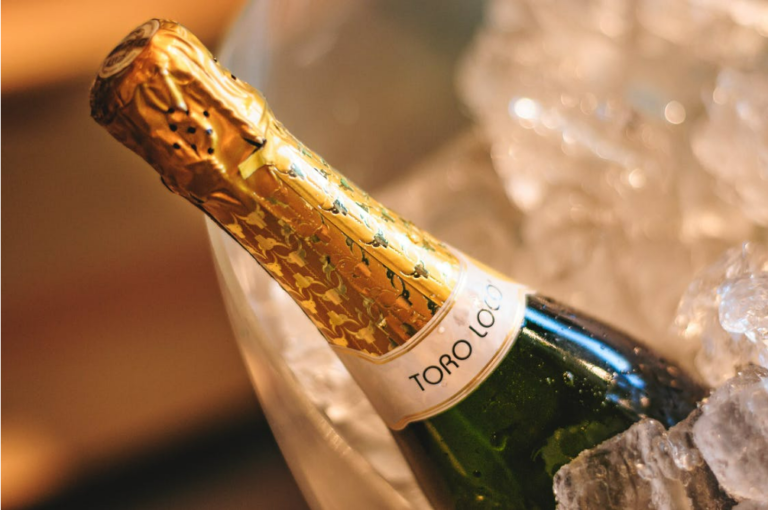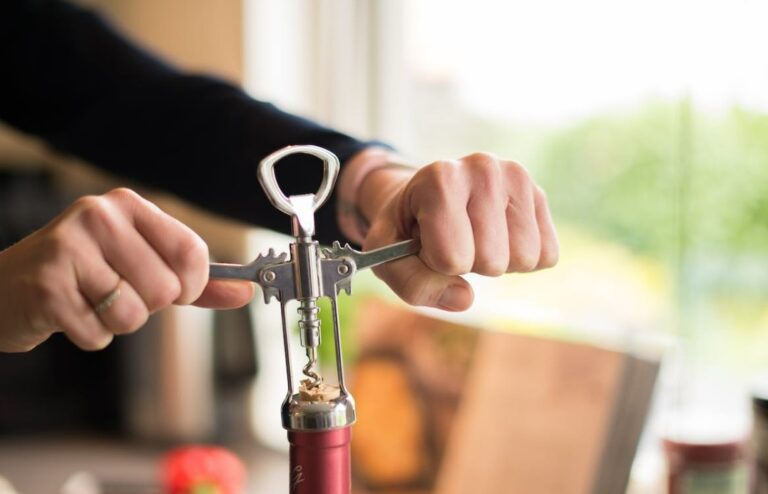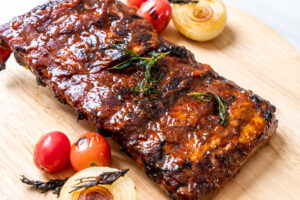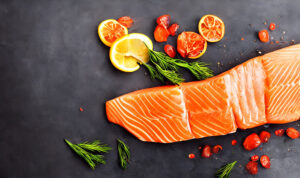
Order your next bottle of Scout & Cellar wine TODAY!
Bordeaux wines are some of the most versatile wines for food pairing. They can be paired with a variety of foods, from light and delicate dishes to heartier meals. This guide will help you pair Bordeaux wines with food, so you can enjoy your meal and drink to the fullest!
What is Bordeaux wine?
Bordeaux wine is a red wine that originates from the Bordeaux region of France. The majority of Bordeaux wines are made from a blend of grapes, the most common being Cabernet Sauvignon, Merlot, and Cabernet Franc.
The climate in Bordeaux is perfect for producing high-quality red wines. The region experiences a lot of rainfall and has a moderate climate, which helps the grapes to ripen slowly and evenly.
This results in wines that are well-balanced with fruity aromas and soft tannins. Bordeaux wines are typically dark in color and have high levels of acidity. They are known for their complex flavor profiles.
Choosing the Perfect Riesling Wine for Any Occasion
Why is Bordeaux wine famous?
Bordeaux wine is famous because it is consistently ranked as one of the best wines in the world. It has a complex flavor that pairs well with food, and it ages well.
Bordeaux wine is made from a blend of Cabernet Sauvignon, Merlot, Cabernet Franc, Petit Verdot, and Malbec grapes. The grape blend and terroir (or soil type) give Bordeaux wine its unique flavor profile.
Bordeaux wine is also famous for its aging potential. Some bottles of Bordeaux can age for decades and still taste great.

Bordeaux tasting notes
When tasting Bordeaux wines, you may notice the aromas of blackberries, plums, cedar, and tobacco. The taste is usually dry, with flavors of dark fruits, chocolate, and coffee.
Bordeaux wines typically have medium to high levels of tannins. Tannins are a type of compound that comes from grape skins, seeds, and stems. They give the wine its astringent taste and can make your mouth feel dry. Tannins are an important part of the aging process for red wines and contribute to a wine’s longevity.
The acidity in Bordeaux wines helps to balance out the tannins and provides a refreshing quality. Acidity also enhances the flavor of food, which is why Bordeaux wines are such great food pairing partners.
Pairing Beef With Bordeaux
Beef is a versatile protein that can be cooked in many different ways. It pairs well with both light and full-bodied red wines. When pairing beef with Bordeaux wine, it is important to consider the fat content and cooking method of the beef.
For leaner cuts of beef, look for lighter-bodied Bordeaux wines like Merlot or Cabernet Franc. These wines will not overpower the delicate flavors of the beef. If you are grilling or roasting lean beef, choose a Bordeaux wine with more tannins to stand up to the smokey flavors from the grill.
For richer, fattier cuts of beef, choose a full-bodied Bordeaux wine like Cabernet Sauvignon. The bold flavors of the wine will complement the beef perfectly. If you are braising or stewing beef, look for a Bordeaux wine that is high in tannins. The tannins will help to soften the fat in the beef and make it more palatable.
Pairing Chicken With Most Bordeaux Wines
There are many different ways to pair chicken with Bordeaux wine. One option is to match the wine to the sauce or preparation you are using for the chicken. For example, if you are making a creamy sauce, you could pair it with a white Bordeaux. If you are grilling or roasting chicken, a red Bordeaux would be a great choice.
Another approach is to consider what side dishes you will be serving with the chicken. If you are serving vegetables and/or starches like potatoes or rice, you might want a fuller-bodied red Bordeaux. If your side dish is something light, like a salad, then a white Bordeaux would be nice.
The Best Types Of Wine With Duck Breast
Pairing Fish With Bordeaux
Fish is a delicate protein that can be easily overpowered by strong flavors. For this reason, it is important to choose a Bordeaux wine that will not overwhelm the fish.
If you are serving fish with a light sauce or preparation, look for a white Bordeaux wine. The acidity in the wine will help to cut through the richness of the sauce and bring out the flavor of the fish. If you are grilling or roasting fish, you could choose a red Bordeaux wine. The tannins in the wine will help to soften the fat in the fish and make it more palatable.
Pairing Vegetarian Dishes With Bordeaux Wine
There are many different types of vegetarian dishes, so it can be tricky to choose the right Bordeaux wine to pair with them. A good rule of thumb is to match the weight of the wine to the weight of the dish.
For example, if you are making a light and delicate vegetarian dish, you might want to choose a white Bordeaux. If you are making a heartier vegetarian dish, like a stew or soup, you could choose a red Bordeaux. The tannins in the wine will help to soften the vegetables and make them more palatable.

Pairing Cheese With Bordeaux
Cheese is another food that can be difficult to pair with wine. The key is to find a Bordeaux wine that will not overpower the cheese. Merlot dominant wines are often a good choice.
For example, if you are serving strong and pungent cheese, you might want to choose a red Bordeaux. The tannins in the wine will help to balance out the strong flavors of the cheese. If you are serving delicate and creamy cheese, you could choose a white Bordeaux. The acidity in the wine will help to bring out the flavor of the cheese without overwhelming it.

Food pairing tips for left bank Bordeaux wines
Left bank Bordeaux wines are typically earthy, tannic, and fruity. They pair well with earthy dishes like mushrooms and lamb, as well as with fatty foods like duck and beef. The tannins in the wine help to cut through the richness of the food, while the fruitiness provides a complementary flavor. For dessert, try pairing a left bank Bordeaux with dark chocolate or cherry pie.
Food pairing tips for right bank Bordeaux wines
Right bank red wine flavors are typically made from Merlot and Cabernet Franc grapes and are known for their fruit-forward, approachable flavor profile. When it comes to food pairing, these wines pair well with a variety of cuisines and dishes.
Here are some tips to help you find the perfect food and wine pairing for your right bank Bordeaux:
- For lighter styles of right-bank Bordeaux, look for dishes that are comparable in weight and lighter in flavor. Think fish, poultry, or vegetable-based dishes.
- Heavier styles of right-bank Bordeaux can stand up to heartier fare like grilled meats or rich pasta dishes and asian sweet chili sauce.
- When in doubt, go for a classic pairing like steak and Bordeaux. The bold flavors of the wine will complement the richness of the meat, while the tannins will help to cut through the fat.
- For a fun and unique pairing, try matching your Bordeaux with chocolate. The fruitiness of the wine will bring out the sweetness of the chocolate, while the tannins will balance out the bitterness.
- If you want to pair your Bordeaux with cheese, look for a wine that is similar in style to the cheese you are serving. For example, if you are serving creamy Brie cheese, pair it with a white Bordeaux. If you are serving a hearty cheddar cheese, pair it with a red Bordeaux.
Should Bordeaux wine be chilled?
Most people believe that all red wines should be served at room temperature, but this isn’t necessarily true. In fact, chilling certain types of red wine, like Bordeaux, can actually enhance the flavor.
The ideal serving temperature for Bordeaux wine is between 55 and 59 degrees Fahrenheit. This may seem cold for a glass of red wine, but it’s actually perfect for bringing out the light fruit flavors and nuances in the wine. If you serve Bordeaux that is too warm, it will taste flat and dull.
So if you’re wondering whether or not to chill your Bordeaux, the answer is yes! Just make sure not to chill it for too long or else you’ll risk losing some of the flavors.
Final Thoughts
Bordeaux wines are some of the most versatile wines for food pairing. They can be paired with a variety of foods, from light and delicate dishes to heartier meals. This guide will help you pair the right Bordeaux wine with the right dish, so you can enjoy your meal and drink to the fullest!
Frequently Asked Questions
Q: Which Bordeaux wines taste best with red meat?
A: There is no one definitive answer to this question. Some people might say that red wines from the Bordeaux wine region pair well with red meat, while others might say that any type of wine goes well with red meat. It really depends on your personal preference.
Q: Is sauvignon blanc what makes white Bordeaux wines so sweet?
A: No, sauvignon blanc is not what makes white Bordeaux wines so sweet. The sweetness in white Bordeaux wines comes from the grapes themselves, which are typically Semillon and/or sauvignon blanc. Semillon is a very ripe grape that has intense Notes of honey, peach, apricot, and tropical fruit. Sauvignon blanc on the other hand is a tart grape with grassy and citrus notes. When these two grapes are blended together, it creates a wine that is both sweet and refreshing. Cheers!
Q: Do sweet wines pair well with roast lamb?
A: Yes, sweet wines can pair well with roast lamb. In general, you want to find a wine that has some sweetness to it so that it can balance out the savory flavors of the meat. A nice dessert wine like a port or Sauternes would be a good option.
Q: Great red Bordeaux wine food pairings.
A: There are many different wines that come from the Bordeaux region of France, and each one has its own unique flavor profile. Consequently, there are also a wide variety of food pairings that can complement these wines. In general, red Bordeaux wines tend to go well with richer fare such as beef and lamb dishes. But there are many other possibilities as well, so it really depends on the specific wine you’re enjoying.
Additional Resources
- Order your next bottle of Scout and Cellar wine HERE!
- Should you chill red wine?
- A Guide to the Best White Wines to Pair with Italian Food







